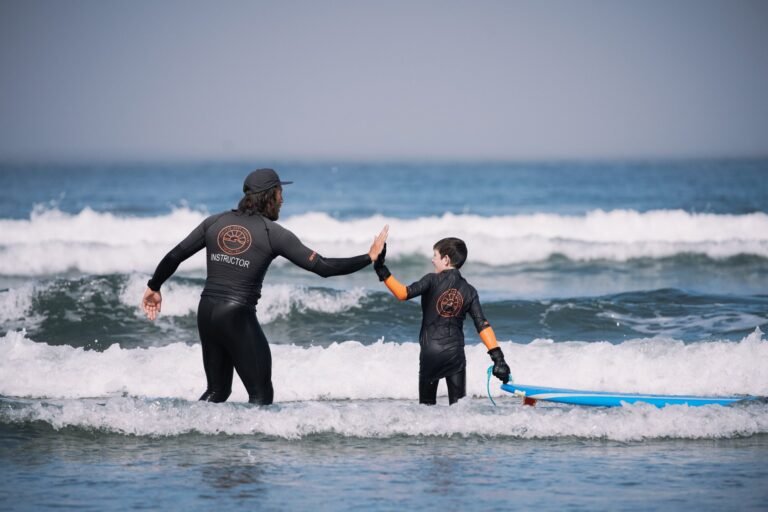Tweedsmuir Provincial Park encompasses an astounding diversity of landscapes and conditions. Because access, facilities, and activities differ from north to south in the park, the park is divided into two sections, with the Dean River acting as a natural boundary between the north and south sections of the park. Tweedsmuir Provincial Park and Recreation Area, at over 981,000 hectares is one of British Columbia’s largest parks.
Most of the northern half of Tweedsmuir Park is encircled by the lakes that comprise the Nechako Reservoir. Ootsa Lake and Whitesail Lake define the north and west boundaries of the park respectively, while Eutsuk Lake bisects the park, turning northern Tweedsmuir into a huge, unpopulated near-island.
Most angling trips in the park begin at Ootsa Lake – mountain whitefish, rainbow trout, kokanee, and bubot are readily caught within the parks waters.
All fish caught in the park must be registered at park headquarters on Whitesail Lake. A variety of private operators provide guided fishing tours and accommodations on the reservoir.
The Nechako Reservoir (Ootsa and Whitesail Lakes) is the main access route to the northern region of the park, but boaters must exercise caution when travelling on these lakes, as the shoreline is a forest of drowned trees and floating debris that creates hazardous boating conditions. A number of channels have been cut through the dead trees to provide access to emergency landing areas. These are indicated by large yellow diamonds and they provide shelter from the sudden and strong winds that funnel down the lakes from the Coast Mountains.
Windstorms rise very quickly, and can blow unabated for a day or more. May is usually the windiest month. Strong winds can be expected for about one-third of the time during the boating season. No attempt should be made to travel long distances or venture far from the shoreline of the reservoir in canoes, kayaks or car-top boats.
A series of interconnected lakes runs nearly 125 miles (200 km) east/west in two broad arms that connect near Kenney Dam at the easternmost end of the Nechako Reservoir. The northern arm consists of Ootsa Lake and Whitesail Lake, while the southern arm, which bisects Tweedsmuir Provincial Park, consists of Eutsuk Lake and Tetachuck Lakes. With a short portage between Whitesail and Eutsuk (a tramway has been built to haul bigger boats across), the lakes can be boated as a 170-mile (275-km) canoe circuit that runs through the vast glacial expanses of the Coast Mountains in the west, for which Tweedsmuir is renowned, and rolling Interior Plateau hills in the east.
Hiking Trails start across from Wistaria Provincial Park and lead back into the heart of Tweedsmuir. Shorter trails are scattered about, mostly at the western end of the two western lakes. The Chickamin Mountain Trail (3 km/3 hours) is a good day-hike from Blackwell Point campsite to the Alpine meadows of the Chickamin Mountain Range, with an elevation change of about 600 metres. Surel Lake Trail (1.5 km long/2 hours) meanders through a beautiful coastal forest to Surel Falls – elevation change of about 50 metres. Sand Cabin Bluff Trail 500 metres/30 minutes) offers spectacular panoramas of the Nechako Plateau and Quanchus Mountains – elevation change is about 90 metres. Tetachuk River Trail (5 km/2 hours) takes one on an easy hike from the east end of Eutsuk Lake along the Tetachuk River to wonderful fishing spots. The Zinc Mountain Mining Road leads up the north side of the Chikamin Range from Whitesail Lake. The elevation change on this approximately 4-km hike is about 1,300 metres, taking an average of 2 hours. Redfish Lake Trail (1.6 km/1 hour) is off Eutsuk Lake, a good spot for fly-fishing.
The Alexander Mackenzie Heritage Trail runs through Tweedsmuir, but it’s not the only trail of length in this park. For experienced hikers, a series of trails start from the north shore of Ootsa Lake, to hike this route, you’ll need to get across nearly 5 kilometres of open water on Ootsa Lake, which is notorious for sudden changes of weather and high winds. Once across the lake, hiking trails lead to Sabina Lake, Chief Louise Lake, Nutli Lake, and ultimately Blanchet Lake, 30 miles (50 km) beyond Ootsa Lake.
There is little margin for error in this huge wilderness area, and backpacking here is recommended for expert backcountry aficionados only. Because Tweedsmuir Park is an undeveloped wilderness with no facilities, visitors should be self-sufficient and properly equipped. The park’s lakes and streams are sources of drinking water, but it is advisable to carry your own potable water. Hikers can arrange to be dropped off and picked up by a local outfitter or tour operator. Wilderness camping is permitted, but few facilities are provided.
Tweedsmuir North Provincial Park is located approximately 60 miles (96 km) south of Highway #16, between Burns Lake and Houston. To reach the northern half of the park, you’re limited to floatplane access from the town of Burns Lake, jet-boat from Ootsa Landing (Nechako Reservoir), or by foot or horseback via the Alexander Mackenzie Heritage Trail. Tweedsmuir Provincial Park is approximately 300 miles (480 km) northwest of Vancouver by air.
Nearby Regions & Towns
Park Notices






